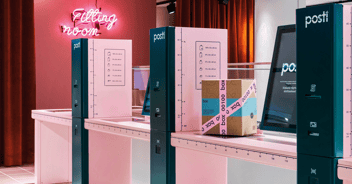The good news is: many tools exist to help get you started with a professional-looking, functioning website. However, improper implementation or lack of development from the customer’s point-of-view can leave ecommerce sites unused or unvisited as sales drop due to user inconvenience.
We want to help! Let’s talk about the headless commerce development process and the specific steps you need to take to prove your company profitable without added stress on your end as a business owner.
1. Aligning Ecommerce with your Business
Start by asking yourself how you want to integrate your ecommerce store into the full site. What's your goal? Are you focused on conversion rate or content engagement? Brands with a large focus on influencers might want to prioritize the content first and purchasing second, while CPG brands will be utilizing the opposite.
As a third option, you may want the site to have ecommerce as an “other” option, but not necessarily pushing it as a primary focus. Common examples of these include publishers whose main business is providing content, but have stores who sell ebooks or manuscripts as well.
2. Determine All Your Products and Services
After evaluating, the way to best move forward in ecommerce development is to do a full audit of the products and services you offer. This should be second nature to you, however, the act of surveying your inventory needs to be done before development begins. Trust us, understanding all the offerings available helps to map out a general site plan to be put in place. This is crucial to developing a perfect UX strategy from the start. Skipping this step can lead to a messy ecommerce site either on the back end with too many pages, and/or on the front end with random product placement and thousands of links.
3. Define your Target Audience and Customers
Now that you know what you have to sell, you also need to understand who your target audience is. Research what their behaviors, patterns, and psychographics are like while taking into account what frustrations they experience that your product or service solves.
Then specifically within your shop space: what does their purchasing journey look like and how can it be improved? Are there any unique qualities about your customers that warrant special functionality, design or user experiences? IE. some sites allow for guest check-out while others offer discounts for adding an email address to their mailing list.
4. Business and Site Functionality Requirements
Congrats on coming this far and getting to know how your system will work, what products it will show, and how your consumers hope to navigate your site. It’s time to dive into functionality.
Some businesses require different kinds of functionality, for example, users who can customize their order, like when ordering pizza and changing toppings. On other ecommerce sites, a preview is provided for users to get a glimpse of the product, like when buying books. Are these functions your business could add to set your website above the rest?
If you are a service-centered business, think of how you’d like users to be able to create appointments through the site in a way that doesn’t conflict with your team’s schedule.
Every business has vastly different systems and requirements, and therefore understanding the functionality goes a long way. There are a plethora of specialized functions out there that you can include to increase the overall positive user experience.
5. Technology Requirements and Choosing your Ecommerce Platform
This is the step most people start with, but you’ll be glad you took the time to prep beforehand. By knowing how your business wants to operate in ecommerce, the foundation will help inform what technology should be used.
There are multiple reputable providers today that can help build your ecommerce sites with simple, intuitive interfaces for those of us who don’t know how to code from scratch. These tools and companies vary in their services and SKU’s so be sure to research them all and find your best fit.
A key factor to always keep in mind when utilizing a host development site is that these tools must be compatible and communicate with the CRM and softwares your business is already using.
At Vincit, we’ve seen and worked with a variety of different requirements and we can now easily recommend and create custom solutions to integrate necessary functions.
6. Plan the Integrations
Ecommerce stores are only 1 piece of the puzzle. For a fully functioning Ecommerce store you’ll need to have to consider the following integrations:
POS Payment Integrations Shipping Integrations Analytics Integrations Inventory Integrations Accounting Integrations Email and Marketing Integrations CRM Integrations Customer Support Integrations Social Media Integrations
7. Start Ecommerce Development
Vincit believes heavily in agile development, so once you have a firm grasp on the requirements and understanding above, actual site building begins.
Here is where the excited hands get moving over the keyboard. The team should build working prototypes and features and check-ins weekly to reaffirm goals and make adjustments where needed.
As with any project, requirements will change, obstacles may come up, but solutions will blossom. This is where final website products are made, when the teams are able to work together and create something from concept to conception. Ultimately, you’ll evolve your ideas into a great ecommerce store for a variety of users and will without-a-doubt grow the business.
8. Launch & Iterate
This is the most exciting part of the ecommerce software development process! Where you finally get to launch after all your hard work!
And just like anything, once the job is done, you’ll realize, there’s always more to do. The only thing that is constant is change.
As your site goes live and starts to obtain traffic, make sales and grow, there will be updates and maintenance. New product releases, seasonal sales and or growing content needs for marketing require constant iteration and updates.
By constantly maintaining, it ensures the long term health and integrity of the site. However, you can’t stop there, ecommerce is becoming increasingly competitive as users have more and more options they can go to. By constantly analyzing and discovering new ways to improve the user experience, you will ensure your ecommerce site is constantly improving and adapting to changing and growing demand.
Ecommerce development can sometimes be much more complex than web development. It has many more functional factors, user considerations, and technological mechanics to keep track of. When embarking on your own ecommerce establishment, ensure that you do your homework, remembering the points above. There’s a very worthwhile experience to be had in building your very own ecommerce site, especially when you do it right.
Why 2023 is the Year to Dive into Ecommerce
First things first, it might sound counterintuitive to start spending precious resources investing into your ecommerce or online presence at this time. However, one could argue that a dip in the economy is the exact time to make the shift and stay ahead of the changes to consumer behavior and your competitors.
Thankfully, technology is adapting at every moment to aid the current needs of the social climate. While a modern recession may affect many industries such as medical, food, and telecommunication for example, ecommerce is no different and will need to adapt with consumers as well.
Loss of foot-traffic or inability for customers to interact with physical products, presents a new need to ensure you’re providing a heightened User Experience. Increased accessibility to products, information and your business through virtual means is the basic first step towards staying afloat for those no longer doing any in-person spending. Improving your online presence will create a reliable infrastructure for your business far beyond any cultural wave.
Changing Consumer Behaviors
If consumer culture as a whole has recently been reluctant to leave the comfort of their homes, they need to be able to continue to rely on your goods or services. In the immediate, they need distractions and have the spare time to browse the vast digital landscapes. Long term effects on consumer behavior? Increased likelihood to interact with brands digitally than ever before.
People typically make the jump into the online shopping space by starting off with what they define as essentials. To list a few: food and cleaning products, home office needs, celebrations that don’t stop, games and entertainment, health products, instruments or tools, and components for DIY projects. During a culture shock, people need new distractions or essentials to make them more comfortable day-to-day.
Navigating the selling space can become tricky however, as time goes on. It’s no secret that a lot of individual family units will be worried about their financial situation. This group will likely be saving now and planning to buy later. But that doesn’t mean they should be ignored in your marketing or planning. You need to be prepared for them when they are ready to return to their normal spending patterns. While this group is looking towards the future, they still deserve a great User Experience with your brand once they recover. Building lasting consumer relationships is key here.
Why Start Now?
To be frank, building or improving an online shop can’t happen overnight without causing a lot of headaches in the future. You will need a minimum of 1.5 to 3 months to get it ready. Make sure you’re not scrambling -- start now.
Be prepared for a “new normal” after this period of social uncertainty. People that once preferred to physically shop or interact with products, are now being forced to use online delivery and/or pick-up options, mobile app ordering, and virtual conferencing for everything from home-schooling to doctor appointments. This situation is forcing late adopters to experience the ease of the digital world, but the transition might not be so smooth. If those frustrated by the online-only lifestyle see how easy things can be through your website, they might not go back to their old ways easily.
Other Variables to Keep in Mind
If you don’t currently have an ecommerce store set up, you will need to alert and prepare your internal operations to make sure you have proper logistics in place. If you’ve already had ecommerce on lock for a while, but are looking to improve the system, you might need to adjust the current process to accomodate a higher percentage of your sales coming via the internet.
During this changing phase, you can’t forget about marketing. Craft your marketing plan to be flexible and reassuring to the public. Make sure your customers know your business is there to make their life easy and safe by offering better online, remote, or virtual experiences.
Whether you’re planning to start your first ecommerce shop, improve your current one, or reimagine your online strategy in the wake of virtualization, it should be thought of as a long term investment. When all is said and done, the right team who never cuts corners will give you a digital property that will change the nature of your business forever. It’s actually lucky timing for a task we’ve all been meaning to do; the nature of the consumer will be completely different in six months, so don’t let the opportunity pass you by.



%20is%20about%20people.jpg?width=352&name=DevOps%20(too)%20is%20about%20people.jpg)